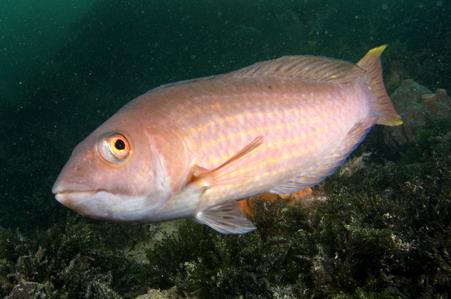General Description
Body moderately long, slender, upper caudal-fin rays slightly produced into a point. Overall pinkish to reddish, paler below, with a black blotch and small white spot at base of last few dorsal-fin rays in juveniles and females. Dorsal and anal fins often with two rows of small red spots. Males often with a yellowish tinge. To 20 cm.
Biology
This endemic species is commonly trawled in south-eastern Australia and although secretive, often seen by divers.
Habitat
Exposed rocky reefs in depths of 2-218 m.
Reefs
Distribution guide
Southern Australia.
Species Group
Fishes › Wrasses, rock whitings and allies
Depth
Shallow (1-30 m)
Deep ( > 30 m)
Water Column
Max Size
20 cm
Commercial Species
Yes
Global Dispersal
Native to Australia
Identify
Conservation Status
- DSE Advisory List : Not listed
- EPBC Act 1999 : Not listed
- IUCN Red List : Not listed






